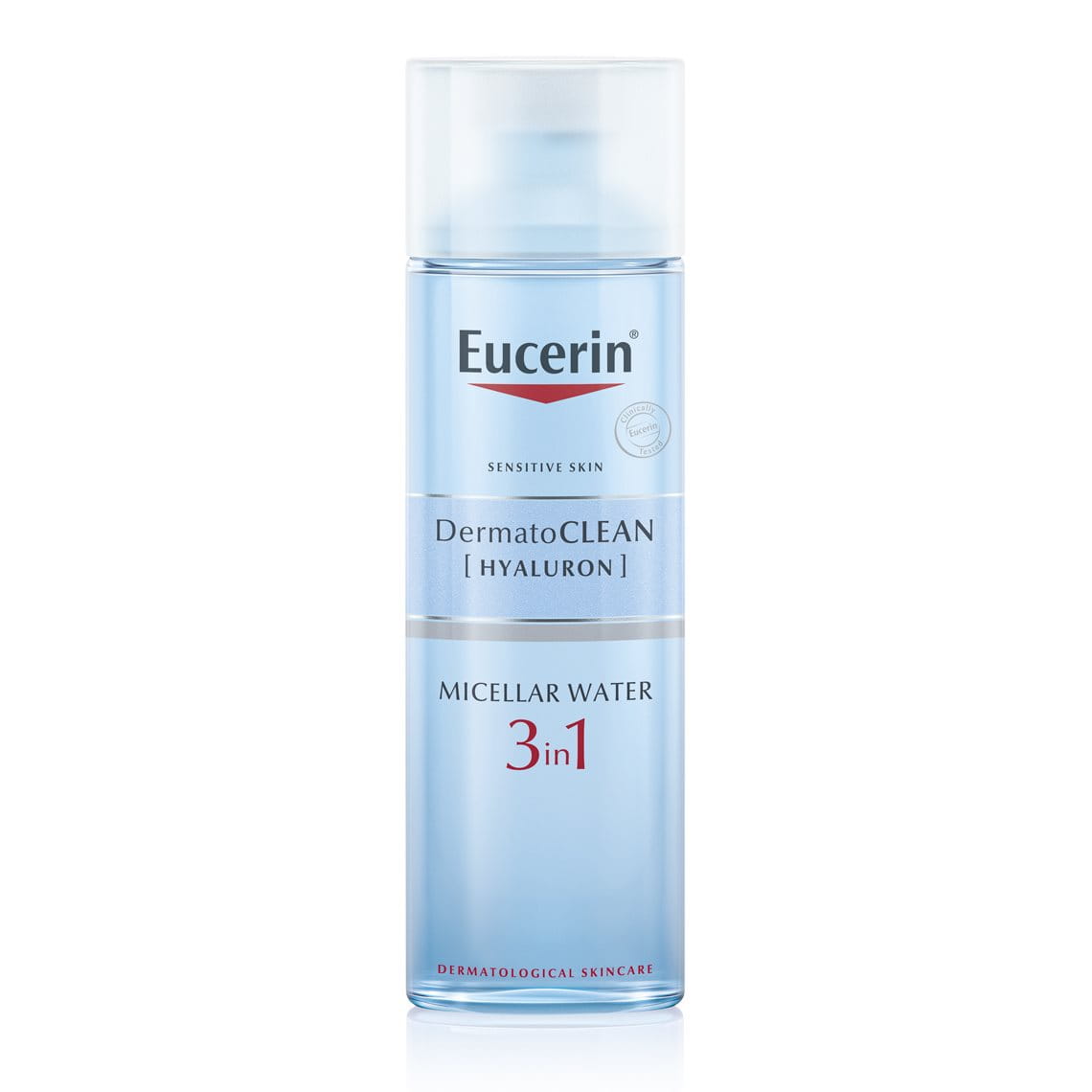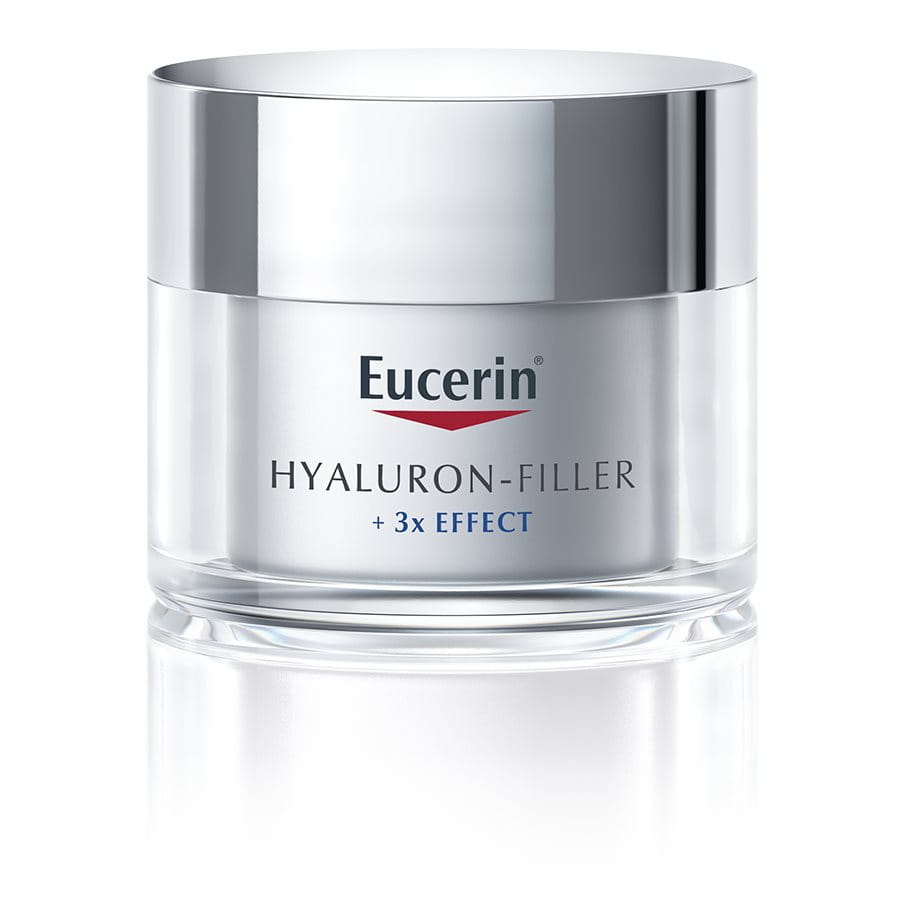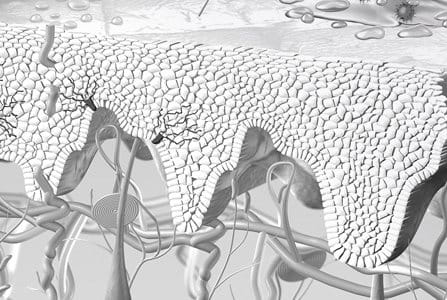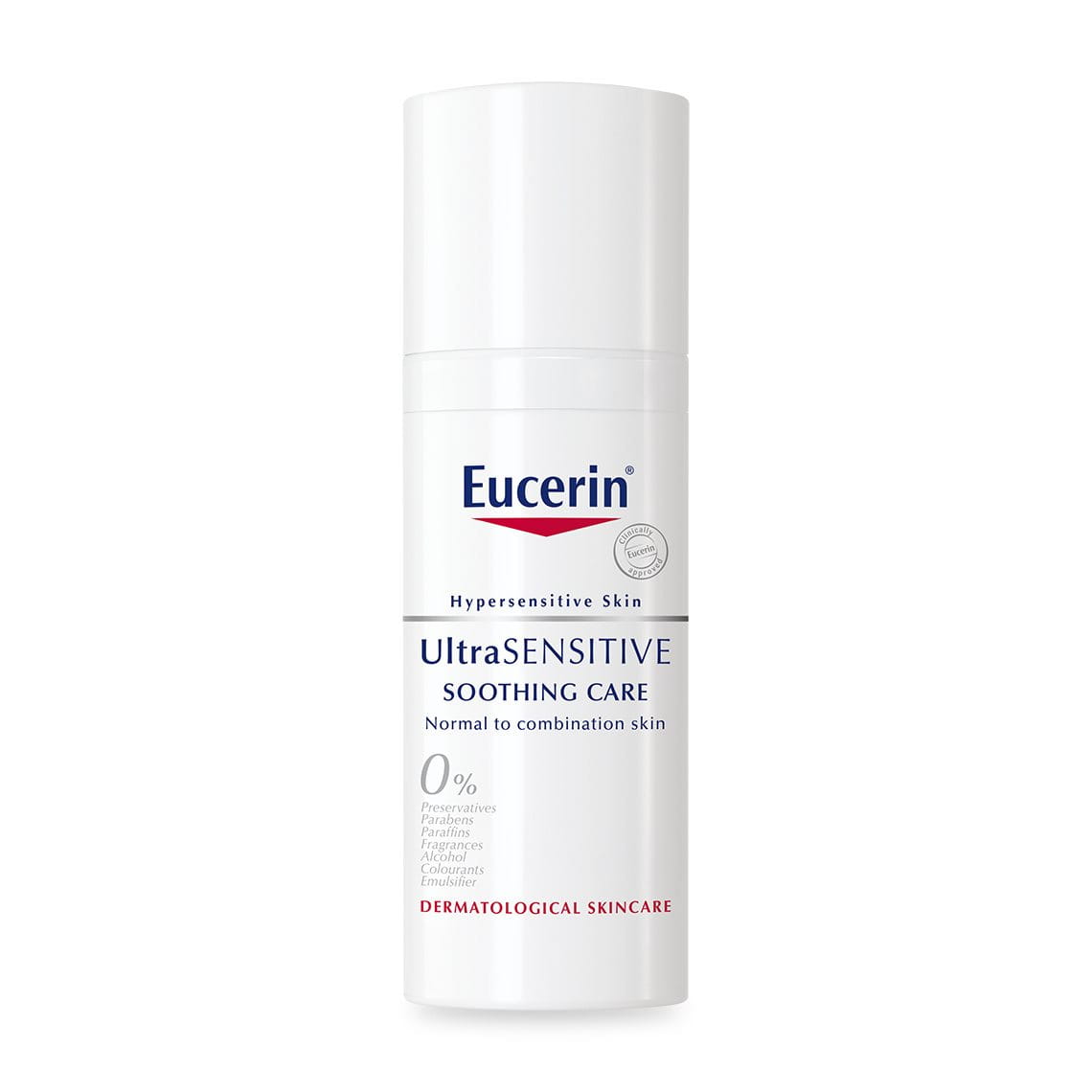Understanding your skin type is crucial for personalised skincare, effective treatment, and overall skin health. While genetics determine skin type, factors like age and environment can change it. Each skin type needs specific products and routines to prevent issues like acne, dryness, or irritation.
Proper knowledge of skin types helps you choose suitable treatments, makeup, and anti-ageing care, allowing adjustments for seasonal changes. This ensures optimal skin health, a balanced complexion, and prevents long-term damage. Read below to find out the characteristics and the differences of each skin type to establish a proper skin care routine with the right products.
What are the four different skin types?
Your skin types depend on how much water is in your skin (as this affects elasticity and comfort), how oily it is and how sensitive it is. Each skin type has its own characteristics and required treatments. There are four basic types of healthy skin: normal, dry, oily and combination skin. Read below for more information about each type of skin.
If you need help with identifying your skin type the skin test may be a useful tool. If you need further advice on how best to care for it, speak to a dermatologist or pharmacist.
Normal skin

The most common type of skin is normal skin. Normal skin does not require special care.is well-balanced and healthy, meaning it is neither too oily, or too dry. People with normal skin typically have a smooth texture, small pores, and an even, healthy colour.
This skin type maintains adequate moisture levels, has minimal sensitivity, and is generally free from major blemishes or irritations, making it resilient and easy to care for. If you have normal skin, your skin feels comfortable and not too tight or greasy after washing your face. There will be minimal oil on the blotting paper if you test it.
Dry skin
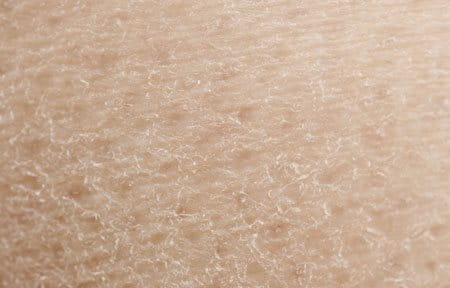
‘Dry’ is used to describe a skin type that produces less sebum than normal skin. As a result of the lack of sebum, dry skin lacks the lipids that it needs to retain moisture and build a protective shield against external influences.
People with dry skin may have a rough complexion, red patches, more visible lines and almost invisible pores. Dry skin is less elastic.
Oily skin
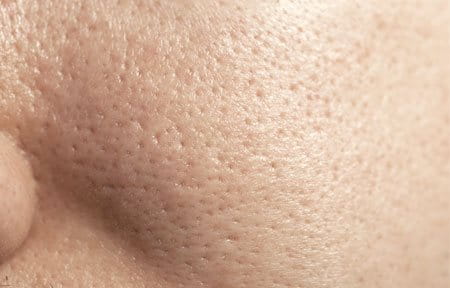
‘Oily’ is used to describe a skin type with heightened sebum production. An over production is known as seborrhea.
This has a bright and porous appearance. Oily skin can vary in severity depending on the time of year. Changes can be caused by stress, heat, puberty or other hormonal changes.
Combination skin

Combination skin is, as the name suggests, skin that consists of a mix of skin types.
Skin can be dry or normal in some areas, but oily in others, like the T-zone (nose, forehead and chin). This is a common skin type and may require different treatment in different areas.
Normal skin
‘Normal’ is a term widely used to refer to well-balanced skin. The scientific term for well-balanced skin is eudermic. The T-zone (forehead, chin and nose) may be a bit oily, but overall sebum and moisture is balanced and the skin is neither too oily nor too dry.
How to identify normal skin
If your skin is normal, you will have:
- fine or barely visible pores
- good blood circulation
- a velvety, soft and smooth texture
- no or few imperfections and blemishes
- no severe sensitivity
As a person with normal skin ages, their skin can become dryer. Read more about how age can induce skin dryness. Read more about variations of normal skin and the skin care routine for it.
Dry skin
Dry skin is a condition characterised by a lack of adequate moisture and natural oils, leading to a rough, flaky, or scaly texture. Dry skin, also known as Xerosis, can vary in severity and appearance. Common signs of dry skin include tightness, especially after washing, visible fine lines and cracks, and a dull complexion. Generally, men are more likely to have oily skin due to higher sebum content and as skin ages, it tends to get drier, which can influence the appearance of wrinkles and lines. Read our recommended face routine for dry skin here.
Eucerin UreaRepair Plus Lotion 10% has been clinically and dermatologically proven to deliver immediate relief and intense, long-lasting moisturisation, delaying dryness and roughness for up to 48 hours. The unique combinations of ingredients – Urea, Ceramide, and Natural Moisturising Factors (NMFs) will bind the moisture in and repair skin’s natural protective barrier to prevent further moisture loss.
What causes dry skin?
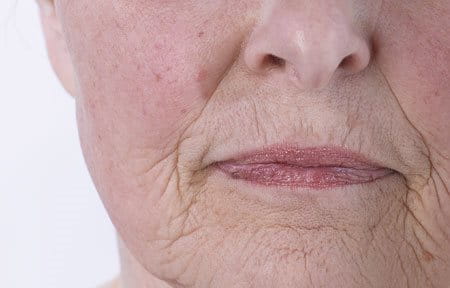
Dry skin is a common concern affecting people of all ages, resulting from a lack of moisture and natural oils. It’s usually temporary, but for some, it can become a lifelong condition. Typically, external factors like weather, hot water, and low air humidity can cause dry skin. However, some internal factors, such as a lack of water in the deeper skin layers and reduced perspiration, can also contribute to dryness.
Skin is constantly losing water via:
- Perspiration: active water loss from the glands caused by heat, stress and activity.
- Trans-epidermal water loss (TEWL): the natural, passive way in which skin diffuses about half a litre of water a day from the deeper skin layers.
Dry skin is caused by a lack of:
- Natural moisturising factors (NMFs) - especially urea, amino acids and lactic acid – that help to bind in water.
- Epidermal lipids such as ceramides, fatty acids and cholesterol which are needed for a healthy skin barrier function.
As a result, the skin’s barrier function can become compromised.
Find out more in dry skin.
How to identify different degrees of dry skin
Dry skin ranges from skin that is a little bit drier than normal, through very dry skin to extremely dry skin. The differences can normally be distinguished by:
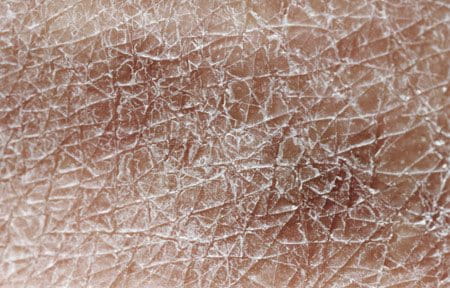
Dry skin
Mild dry skin refers to a condition where the skin lacks proper moisture and may feel slightly tight, rough, or appear dull. With mild dry skin, you can feel tight, brittle, rough, and dull. Skin elasticity is low, and both internal and external factors can affect the skin's ability to stay hydrated. The soles of the feet often become dry and cracked. It's not as severe as moderate or severe dry skin, but it still requires attention to prevent worsening or discomfort.
Very dry skin
If the dryness is not treated, skin may develop:
- mild scaling or flakiness in patches
- a rough and blotchy appearance (sometimes it appears to be prematurely aged)
- a feeling of tightness
- possible itchiness
It is also more sensitive to irritation, redness and the risk of infection. Find out more in dry skin.
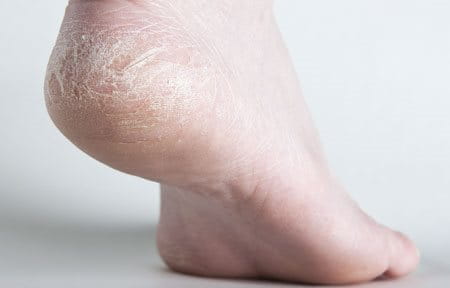
Extremely dry skin
Some people also experience extremely dry skin – a severe condition characterised by intense dehydration, flakiness, roughness, and discomfort. This level of dryness can be painful and lead to skin conditions like eczema or dermatitis if left untreated. Certain areas of the body – particularly hands, feet, elbows and knees – are prone to:
- roughness
- chapping with a tendency to form rhagades (cracks)
- calluses
- scaling
- frequent itchiness
Extremely dry skin is most commonly found on the elderly or on the feet.
Learn more about dehydrated skin.
Eczema
Atopic dermatitis (eczema) is a common skin disease characterised by dry skin and symptoms such as flaky or itchy skin with redness and inflammation, often presenting as a rash with raised bumps that may ooze or crust over if scratched. This typically occurs in childhood but also affects many adults as well. Atopic dermatitis is believed to be caused by genetic and environmental factors, such as a compromised skin barrier, immune system dysfunction, and triggers like allergens, stress, or irritants.
Treatment typically involves moisturising the skin, avoiding triggers, and using medications like corticosteroids or immunomodulators to manage symptoms and flare-ups.
Oily skin
‘Oily’ is used to describe a skin type with heightened sebum production. This over production is known as seborrhoea. Oily skin is a type of skin characterised by the overproduction of sebum, the skin’s natural oil. It tends to have a shiny or greasy appearance, particularly in the T-zone (forehead, nose, and chin).
Common among adolescents and those aged under 30 years old, oily skin can vary depending on the time of the year. Proper skincare, including cleansing and using products formulated for oily skin, can help manage oil production and minimise associated issues. Read more about oily and acne-prone skin.
The causes of oily skin
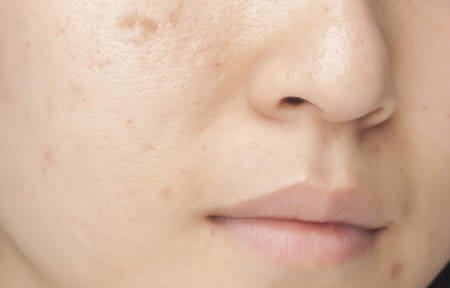
Oily skin is caused by excessive fat production by sebaceous glands. This overproduction of sebum can be triggered by:
- genetics
- hormonal changes and imbalances
- medication
- stress
- comedogenic cosmetics (make-up products that clog the pores)
How to identify the different types of oily skin
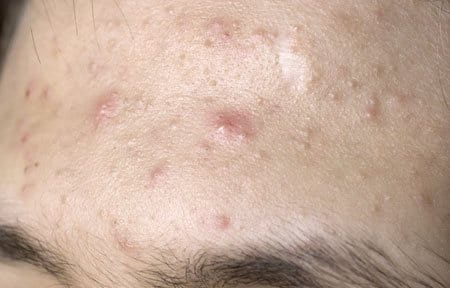
Oily skin often shows enlarged and visible pores, especially in the T-Zone, which is the forehead, nose, and chin area. The characteristics of oily skin usually include the following:
- enlarged, clearly visible pores
- a glossy shine
- thicker, pale skin: blood vessels may not be visible
Oily skin is prone to comedones (blackheads and whiteheads) and to the varying forms of acne.
With mild acne, a significant number of comedones appear on the face and frequently on the neck, shoulders, back and chest too. In moderate and severe cases, papules (small bumps with no visible white or black head) and pustules (medium sized bumps with a noticeable white or yellow dot at the centre) appear and the skin becomes red and inflamed.
Read more in acne.
Combination skin
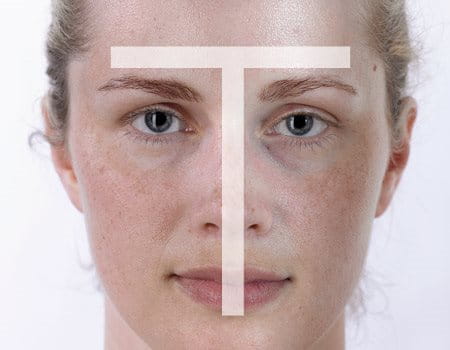
Combination skin consists of a mix of skin types. This means that your skin can be dry or normal in some areas but oily in others, like the T-zone (nose, forehead, and chin). Combination skin has dry and oily skin characteristics because the distribution of sebaceous and sweat glands is not uniform.
Characteristics of combination skin include:
- an oily T-zone (forehead, chin and nose) with shiny skin
- enlarged pores in this area, or pores that look larger than normal, perhaps with some impurities
- blackheads
- normal to dry cheeks
The causes of combination skin
The oilier parts of combination skin are caused by an overproduction of sebum. The drier parts of combination skin are caused by a lack of sebum and a corresponding lipid deficiency. The causes of combination skin can vary, but several factors contribute to this skin type:
- genetics
- hormonal changes
- environmental factors
- skincare products
- stress
- diet
Understanding these factors can help manage combination skin effectively through an appropriate skincare routine for combination skin and lifestyle adjustments.
Sensitive skin
Sensitive skin is a common type that is easily irritated by different factors. It is generally tolerated by well-balanced skin, such as skin care products or high and low temperatures. It's also possible to have a combination of oily skin and sensitive skin or dry skin and sensitive skin.
The causes of sensitive skin
Sensitive skin occurs when the skin's natural barrier function is compromised, leading to water loss and increased susceptibility to irritants. While sensitivity can be permanent for some, it can also be triggered by various internal and external factors. Identifying triggers can help avoid certain ingredients or environmental factors that exacerbate sensitivity.
The common triggers of sensitive skin include:
- hormonal changes
- extreme dry skin
- eczema
- pollution
- allergy
- alcohol
- stress
- foods, such as dairy, wheat, soy, eggs, nuts, etc
Symptoms, such as itching, redness, or a burning sensation, can be exacerbated by factors such as sun exposure or certain ingredients in cosmetics and cleansers. For oily skin, following a daily skincare routine with appropriate products is essential.
How do you treat sensitive skin?
If you have sensitive skin, it’s important to choose skincare products that are free of irritants, such as gentle cleansing and moisturising products.
The Eucerin DermatoCLEAN Refreshing Cleansing Gel is formulated with gentle ingredients and does not contain alcohol or harsh chemicals. It includes glycerin, which helps to hydrate and soften the skin without causing irritation, and APG Complex, derived from natural sources, which effectively cleanses the skin without stripping away its natural oils. These ingredients help to soothe and hydrate the skin without causing irritation or dryness.
Other than cleansers, you should also use Micellar Water and Toner with gentle ingredients to maintain your skin barrier, prevent irritation, and hydrate and soothe your skin.
Read more about the causes and the right treatment for sensitive skin.
How do I find out my skin type?
If you are still unsure about your skin type, we recommend speaking to a dermatologist for further advice. However, there are some simple steps below to help you determine your skin type:
- Wash your face with a gentle cleanser to remove dirt oil and make-up
- Pat your skin dry with a soft towel
- Do not apply any skincare products after washing
- Wait and observe for an hour, this allows your skin to return into its natural state
- Look at your skin and assess how it feels and looks (pay attention to forehead, nose, chin, and cheeks)
- Certain symptoms can identify your skin type (normal skin, oily skin, dry skin, combination skin, or sensitive skin)
Evaluating skin types and conditions
Evaluating skin types and conditions
Unlike skin type, skin condition can vary greatly during the course of your life. The many internal and external factors that determine its condition include: climate and pollution, medication, stress, hereditary factors that influence the levels of sebum, sweat and natural moisturising factors that your skin produces as well as the products that you use and the skincare choices that you make.
Skincare products should be selected to match skin type and address skin condition. Dermatologists and other skincare experts determine a person’s skin type and condition by measuring the following factors:
Our skin type can evolve during our lifetime. Those with an oily skin type in their teenage years can find their skin becoming drier post-puberty, and those with a normal skin type can find their skin getting drier as they age. As all skin types age, skin loses volume and density, fine lines and wrinkles appear, and changes in pigmentation can occur. Understanding and measuring these signs of ageing helps us determine our skin's condition.
Anti-ageing products can help reduce the appearance of wrinkles. Eucerin Hyaluron Filler Day SPF 30 contains several key ingredients to tackle the first signs of ageing. The serum contains Hyaluronic Acid, which helps to maintain hydration and moisture and reduce the appearance of fine lines and wrinkles, resulting in a smoother and more youthful complexion. This combination of ingredients helps to smooth the skin's surface, penetrate deeper layers to address more pronounced wrinkles and improve overall skin elasticity and texture.
Skin colour
Skin colour and ethnicity influence how skin reacts to external factors such as the sun, pigmentation disorders, irritation, and inflammation. Basic skin colour is determined by the epidermis's density and the melanin distribution. Skin redness is also a useful indicator of skin condition; it reflects circulation health and can help identify conditions like couperose and rosacea.
Skincare tips
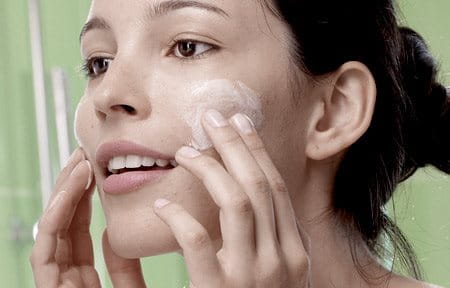
No matter what your skin type is, it's important to follow these skincare tips to keep your skin looking healthy:
- Use a broad spectrum sunscreen every day, even when it's cloudy, to protect your skin from UVA and UVB rays
- Avoid direct sunlight between the hours of 11am-3pm, and wear protective clothing like a hat and sunglasses
- Moisturise daily
- Wash your skin gently and remove make-up before bed
- Stay hydrated by drinking plenty of water
- Don't smoke
Our brand values

We deliver a holistic dermo-cosmetic approach to protect your skin, keep it healthy and radiant.

For over 100 years, we have dedicated ourselves to researching and innovating in the field of skin science. We believe in creating active ingredients and soothing formulas with high tolerability that work to help you live your life better each day.

We work together with leading dermatologist and pharmacist partners around the world to create innovative and effective skincare products they can trust and recommend.








